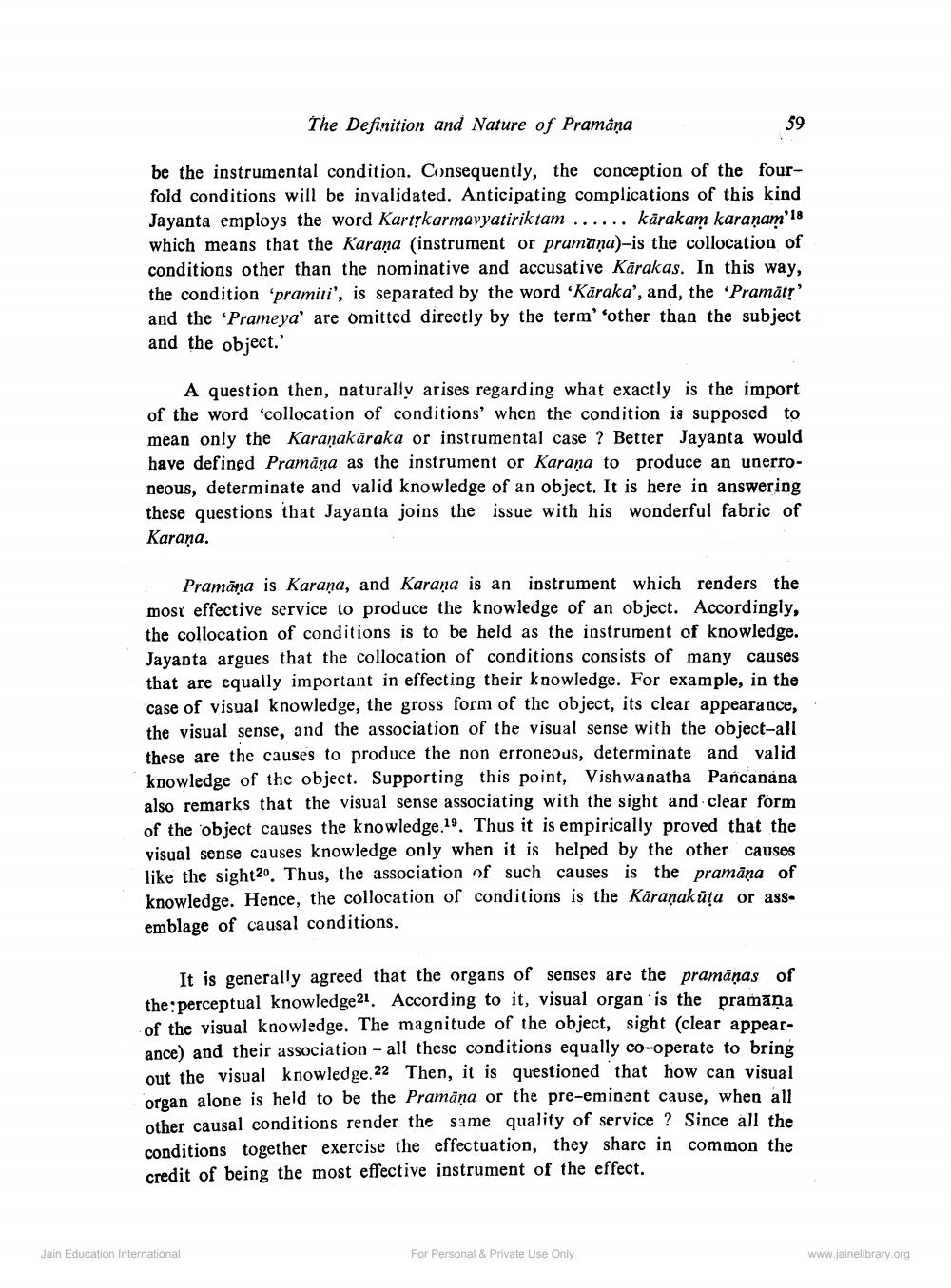________________
The Definition and Nature of Pramâna
be the instrumental condition. Consequently, the conception of the fourfold conditions will be invalidated. Anticipating complications of this kind Jayanta employs the word KartȚkarmavyatiriktam ...... kārakam karaṇam'18 which means that the Karaņa (instrument or pramāņa)-is the collocation of conditions other than the nominative and accusative Kärakas. In this way, the condition 'pramili', is separated by the word 'Kāraka', and, the ‘Pramāt' and the 'Prameya' are omitted directly by the term 'other than the subject and the object.
A question then, naturally arises regarding what exactly is the import of the word 'collocation of conditions when the condition is supposed to mean only the Karanakäraka or instrumental case ? Better Jayanta would have defined Pramāņa as the instrument or Karaņa to produce an unerroneous, determinate and valid knowledge of an object. It is here in answering these questions that Jayanta joins the issue with his wonderful fabric of Karana.
Pramāna is Karana, and Karaṇa is an instrument which renders the most effective service to produce the knowledge of an object. Accordingly, the collocation of conditions is to be held as the instrument of knowledge. Jayanta argues that the collocation of conditions consists of many causes that are equally important in effecting their knowledge. For example, in the case of visual knowledge, the gross form of the object, its clear appearance, the visual sense, and the association of the visual sense with the object-all these are the causes to produce the non erroneous, determinate and valid knowledge of the object. Supporting this point, Vishwanatha Pancanana also remarks that the visual sense associating with the sight and clear form of the object causes the knowledge.19. Thus it is empirically proved that the visual sense causes knowledge only when it is helped by the other causes like the sight20. Thus, the association of such causes is the pramāņa of knowledge. Hence, the collocation of conditions is the Käranakuta or ass. emblage of causal conditions.
It is generally agreed that the organs of senses are the pramānas of the perceptual knowledge21. According to it, visual organ is the pramana of the visual knowledge. The magnitude of the object, sight (clear appearance) and their association - all these conditions equally co-operate to bring out the visual knowledge.22 Then, it is questioned that how can visual organ alone is held to be the Pramāņa or the pre-eminent cause, when all other causal conditions render the same quality of service ? Since all the conditions together exercise the effectuation, they share in common the credit of being the most effective instrument of the effect.
Jain Education International
For Personal & Private Use Only
www.jainelibrary.org




